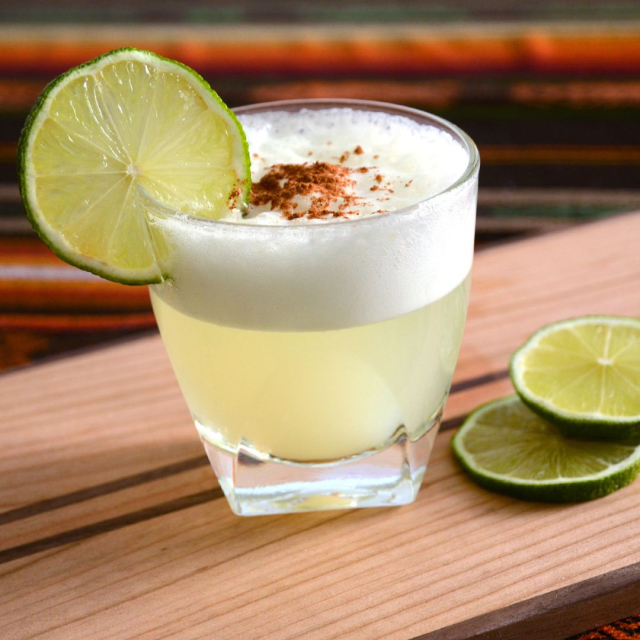The Pisco Sour is much more than a drink; it is a symbol of Peruvian cultural identity and an emblem of its gastronomic richness. Every first Saturday in February, Peru celebrates National Pisco Sour Day, an event that highlights not only the exceptional flavor of this drink, but also the tradition and history it carries with it.
History of the Pisco Sour
The origin of the Pisco Sour dates back to the early 20th century in Lima, the Peruvian capital. Its creator was Victor Morris, an American bartender who moved to Peru and opened a bar called "Morris' Bar" in 1916. Inspired by the whiskey sour, Morris used pisco, a traditional Peruvian grape spirit, to create a local version of this classic cocktail.
The Pisco Sour soon gained popularity among the upper class of Lima and foreign travelers visiting the country. Over time, the original recipe was perfected by Peruvian bartenders, who added egg white and angostura to give it its characteristic foam and a touch of bitterness. Today, the Pisco Sour is one of the most representative drinks of Peru and is protected by designation of origin.
Classic Pisco Sour Ingredients
The traditional Pisco Sour recipe includes the following ingredients:
Pisco: The base of this drink, produced exclusively in selected regions of Peru such as Ica, Lima, Arequipa and Tacna. The pisco used can be of different types, such as pure, acholado or green must, depending on the desired flavor profile.
Lemon Juice: Peruvian lemon is used, known for its unique acidity and aroma.
Sugar or Gum Syrup: To balance the acidity of the lemon.
Egg White: Provides the characteristic foamy texture of the Pisco Sour.
Ice: To cool the drink.
Angostura Bitters: Added at the end, adding a touch of complexity to the flavor.
Preparation Process
Making a good Pisco Sour requires attention to detail and precise execution. Here is the step-by-step process:
Mix Ingredients: In a cocktail shaker, combine 3 ounces pisco, 1 ounce fresh lime juice, 1 ounce simple syrup and the white of one egg.
Dry Shake: Shake vigorously without ice to emulsify the egg white and create an even foam.
Shake with Ice: Add ice to the shaker and shake again to chill the mixture.
Serving: Strain the mixture into a chilled glass or shot glass.
Garnish: Add a few drops of Angostura bitters over the foam.
The Pisco Sour in Peruvian Culture
The Pisco Sour is not just a drink; it is an essential component of Peruvian culture and identity. Its importance is reflected in the designation of the first Saturday in February as its national day, established by the Peruvian government in 2004. During this celebration, bars, restaurants and homes across the country prepare this drink to share with friends and family.
The Pisco Sour also plays a key role in promoting tourism in Peru. Pisco routes, which include visits to wineries and distilleries, attract thousands of visitors each year, who have the opportunity to learn about the pisco-making process and enjoy this drink directly at its place of origin.
The Debate on the Origin of Pisco
Although the Pisco Sour is unquestionably Peruvian, pisco as a spirit has been a source of dispute between Peru and Chile. Both countries claim the origin of pisco, but historical evidence and the designation of origin granted to Peru reinforce their link with this drink.
Peruvian pisco is distinguished by its production method, which respects strict quality standards. In addition, it is made using selected grapes and no addition of water is allowed after distillation, which guarantees a pure and high-quality product.
Variations of the Pisco Sour
Although the classic Pisco Sour recipe is the most popular, there are creative variations that incorporate additional ingredients to give it a modern twist:
Maracuyá Sour: Uses passion fruit juice instead of lemon, adding a tropical flavor.
Coca Sour: Includes an infusion of coca leaves, a traditional Andean ingredient.
Chilcano Sour: Combines the characteristics of the Chilcano with the foamy texture of the Pisco Sour.
Camu Camu Pisco Sour: An exotic option that takes advantage of the unique flavors of this Amazonian fruit.
International Recognitions
The Pisco Sour has received numerous international awards over the years. It has been featured in mixology competitions and is one of the most recommended drinks in tourism and gastronomy guides. In many countries, such as the United States and Spain, the Pisco Sour is a popular choice in bars and restaurants, reinforcing its status as a world-class cocktail.
The Future of Pisco Sour
As the world continues to explore and value gastronomic diversity, the Pisco Sour has a promising future. Innovation in mixology and the growing interest in artisanal drinks are helping to position the Pisco Sour as a modern and versatile option. In addition, government and private initiatives in Peru continue to promote pisco and the Pisco Sour globally, ensuring its legacy for future generations.
The Pisco Sour is not just a drink; it is a true national pride for Peru. Its history, flavor, and cultural relevance make it an essential element of the Peruvian identity. Every February 1st, National Pisco Sour Day invites Peruvians and food lovers around the world to raise their glasses and celebrate this unique creation. Whether enjoyed at a winery in Ica, a chic bar in Lima, or in the comfort of home, the Pisco Sour remains an unforgettable experience that captures the essence of Peru.
